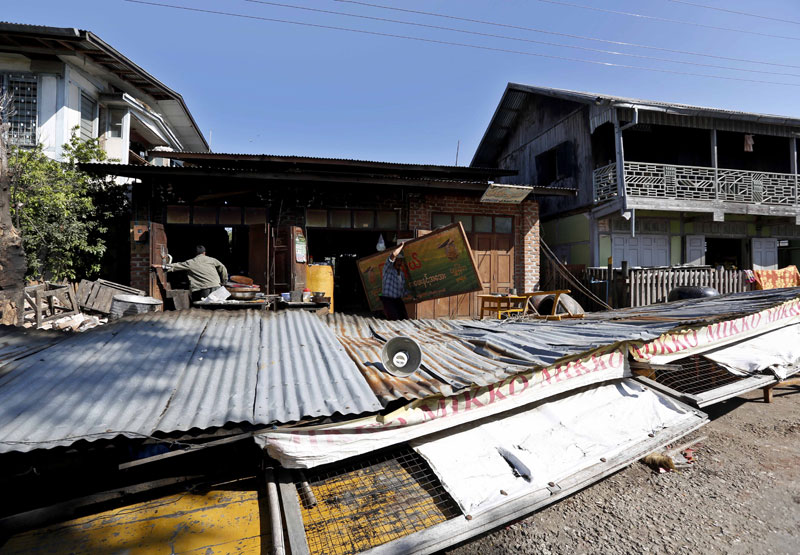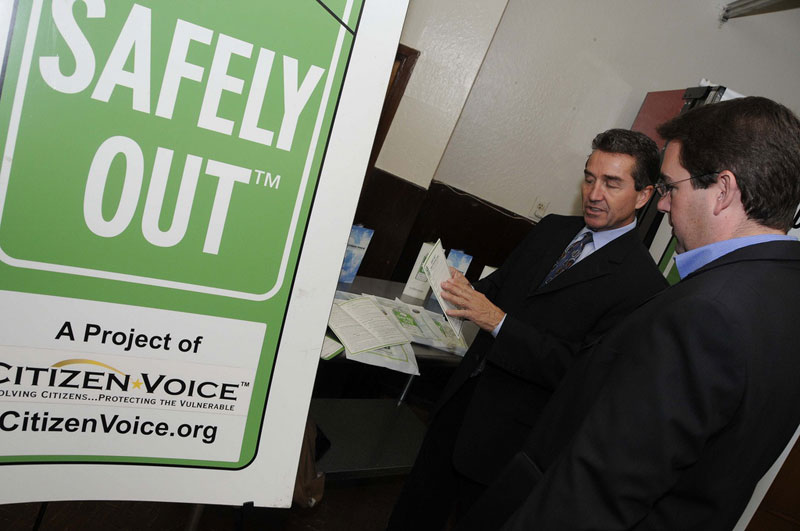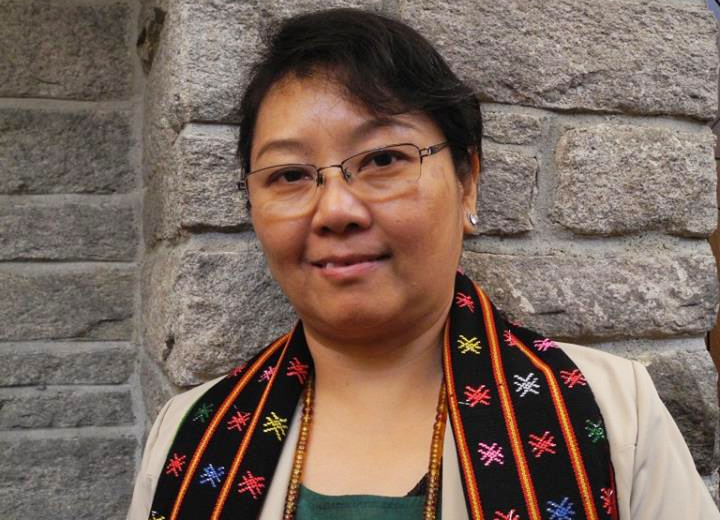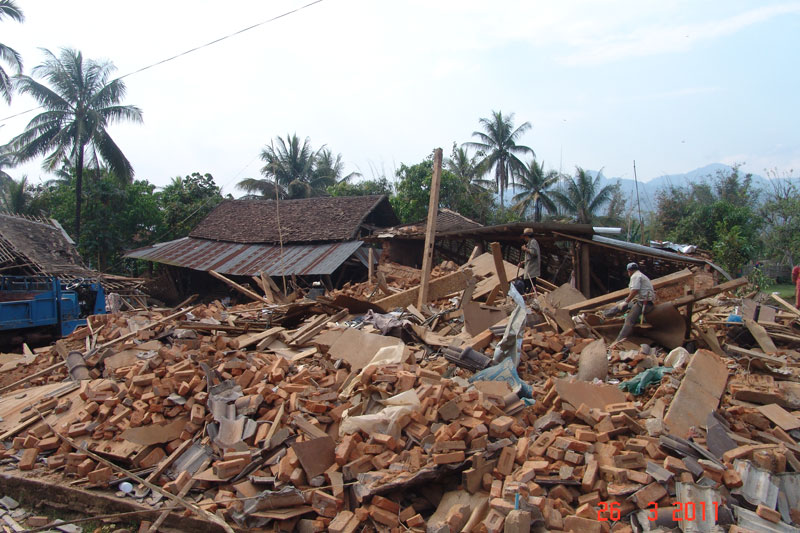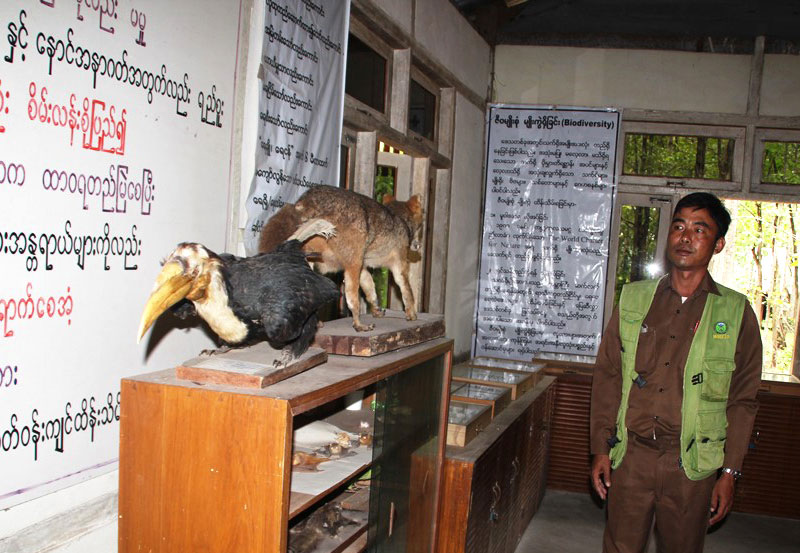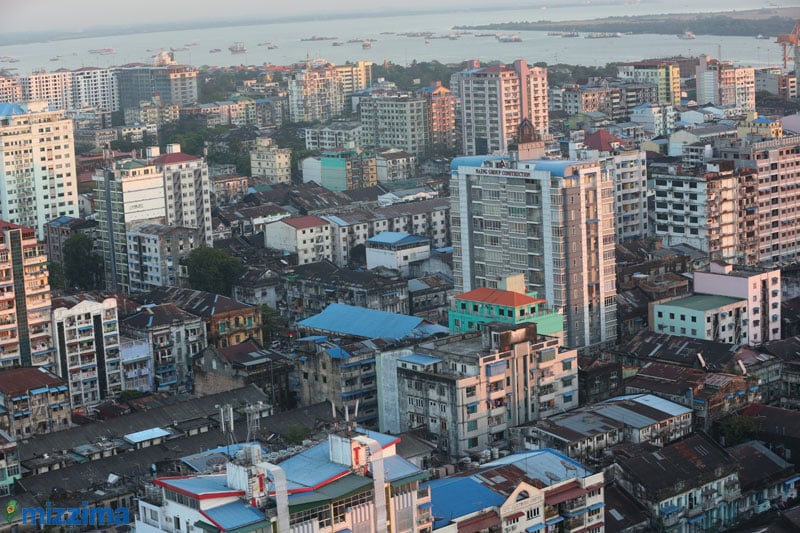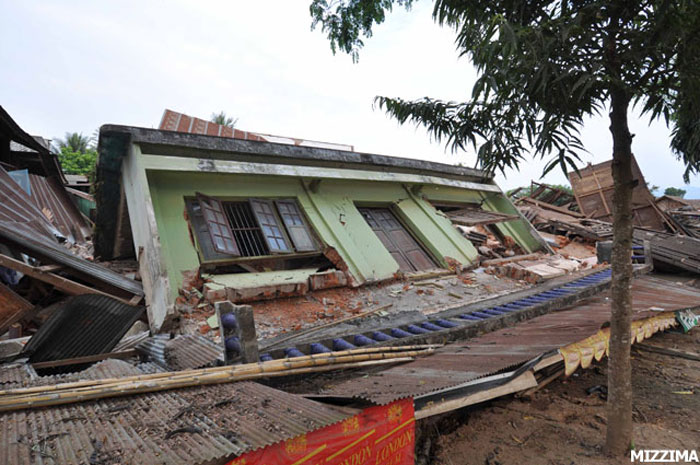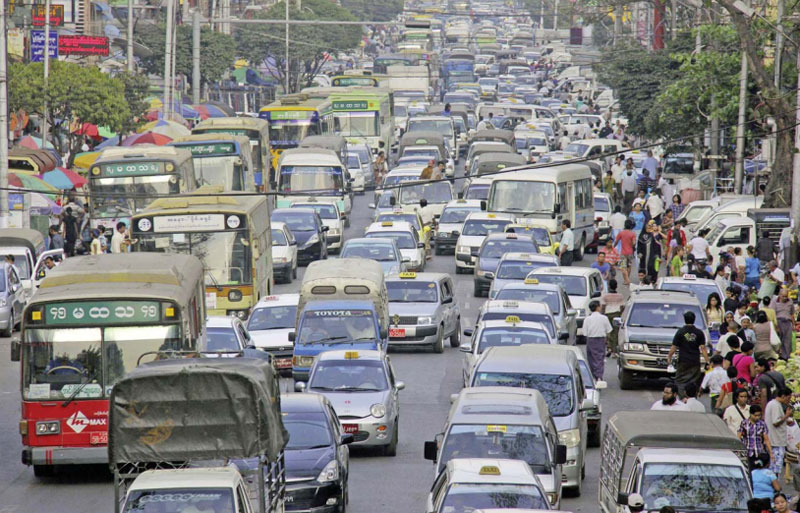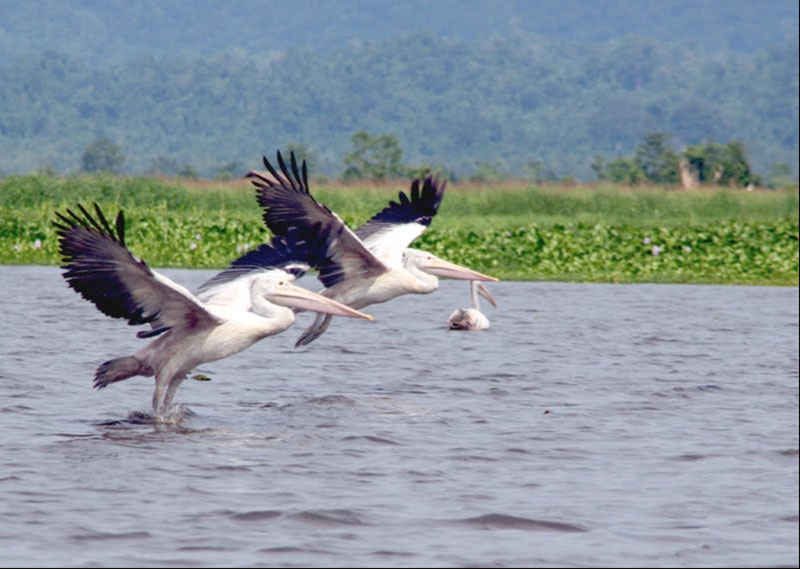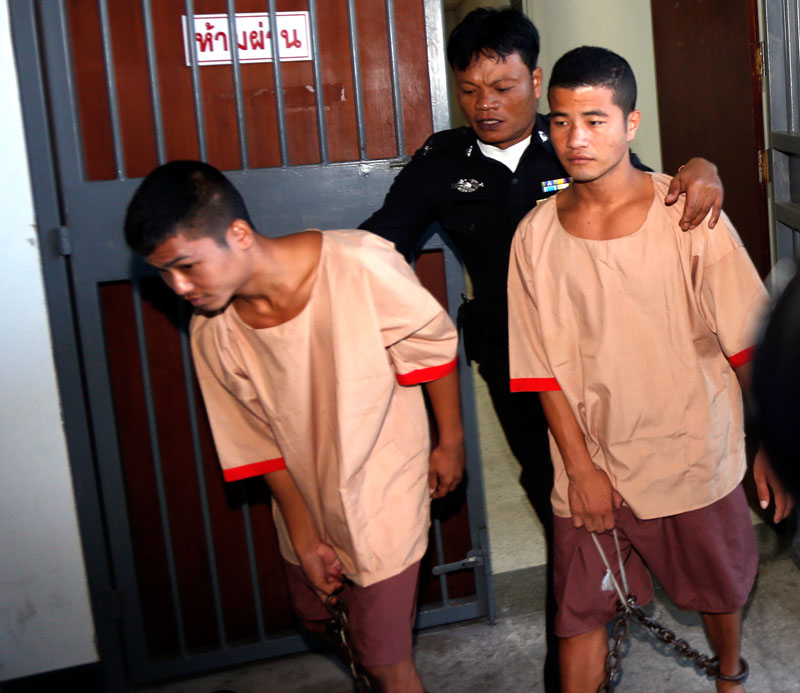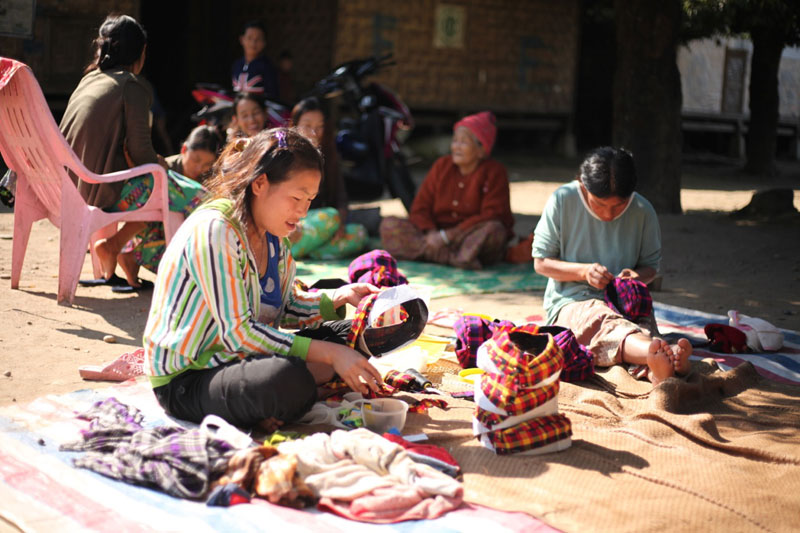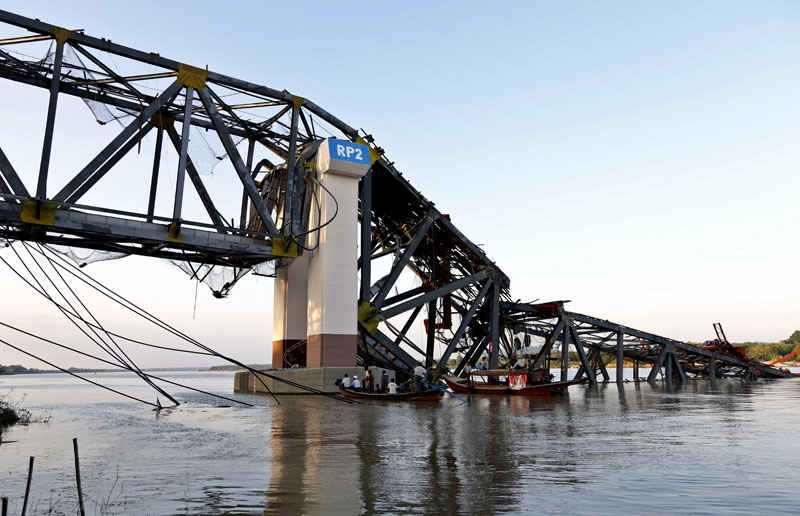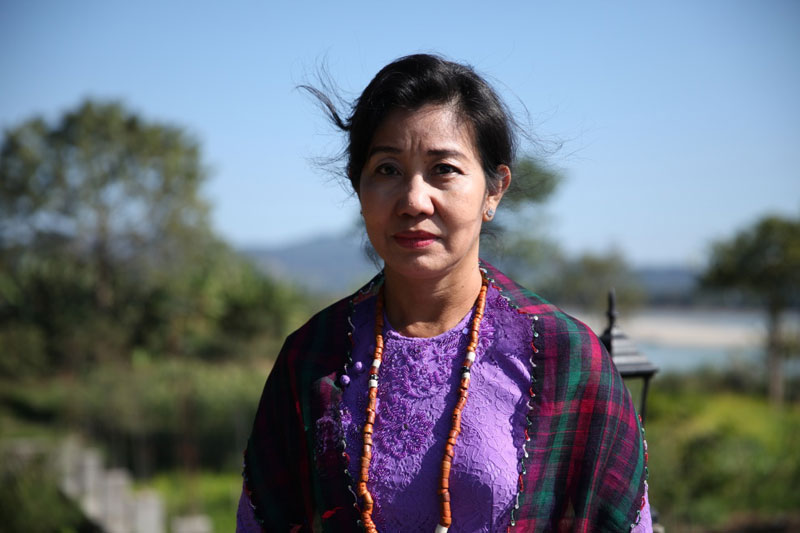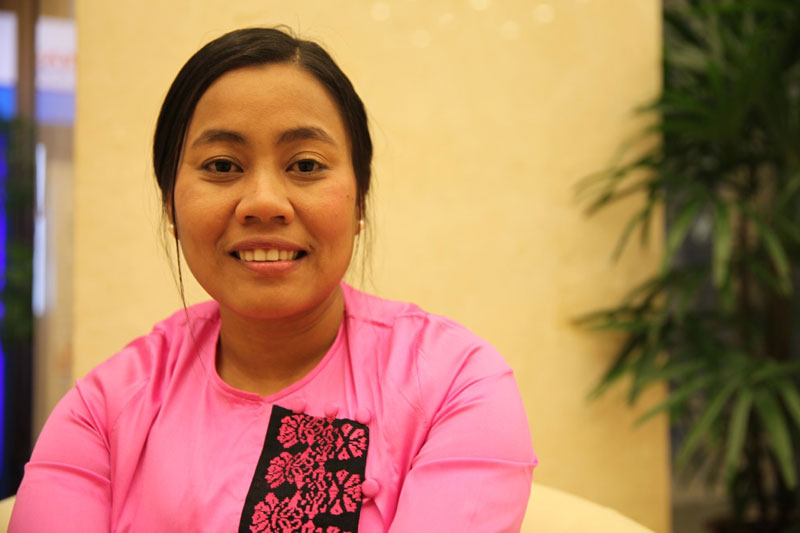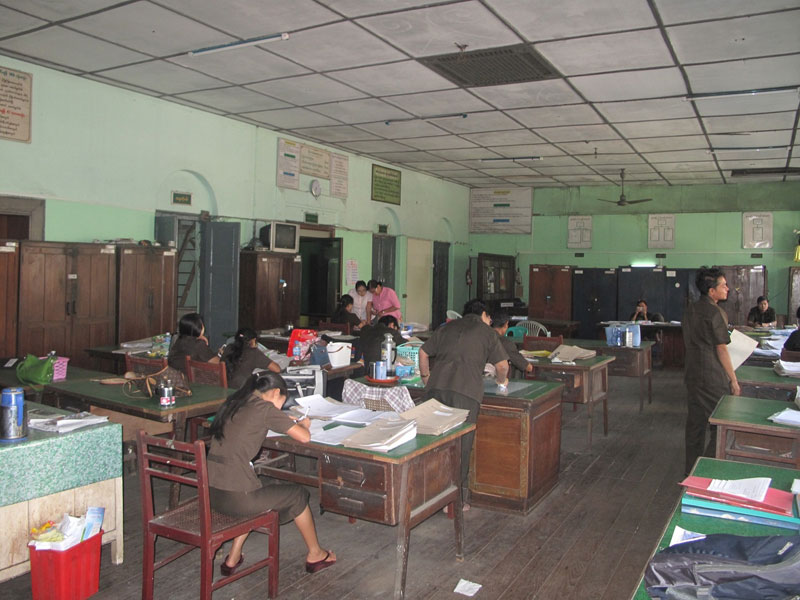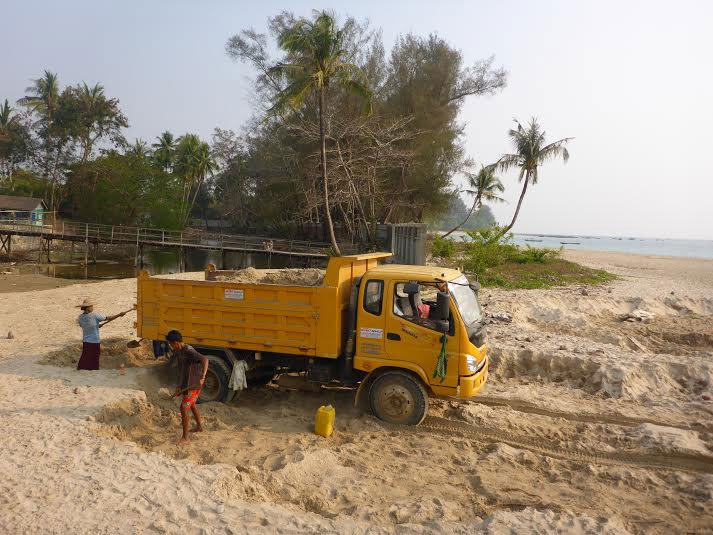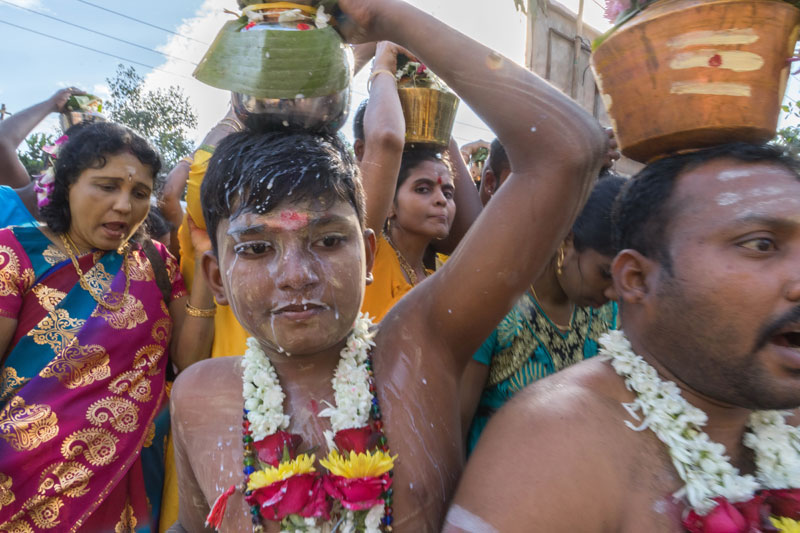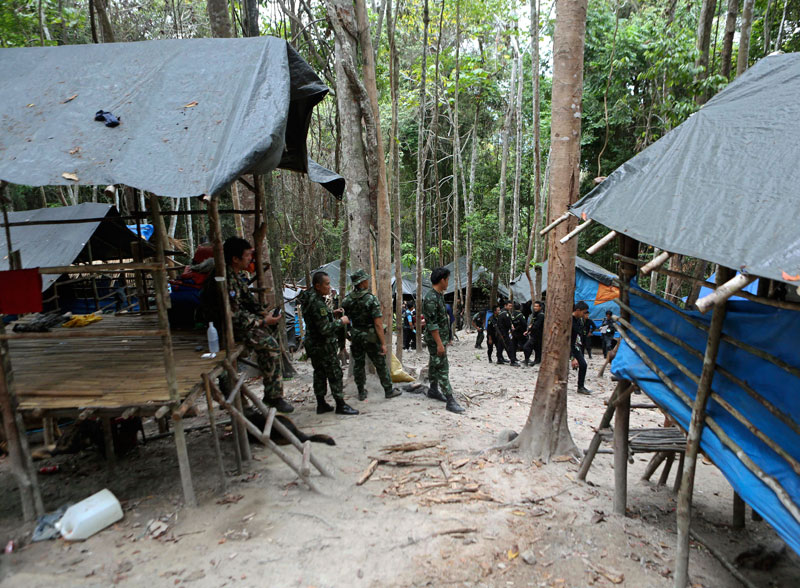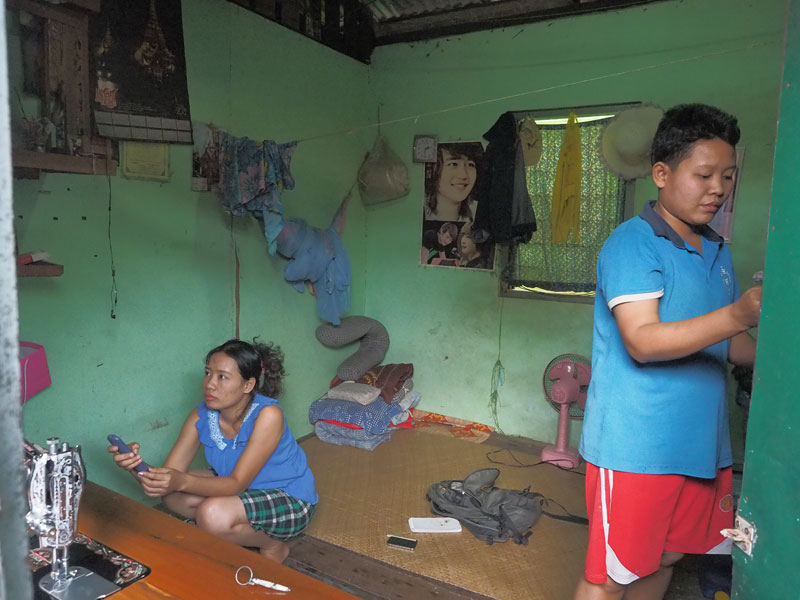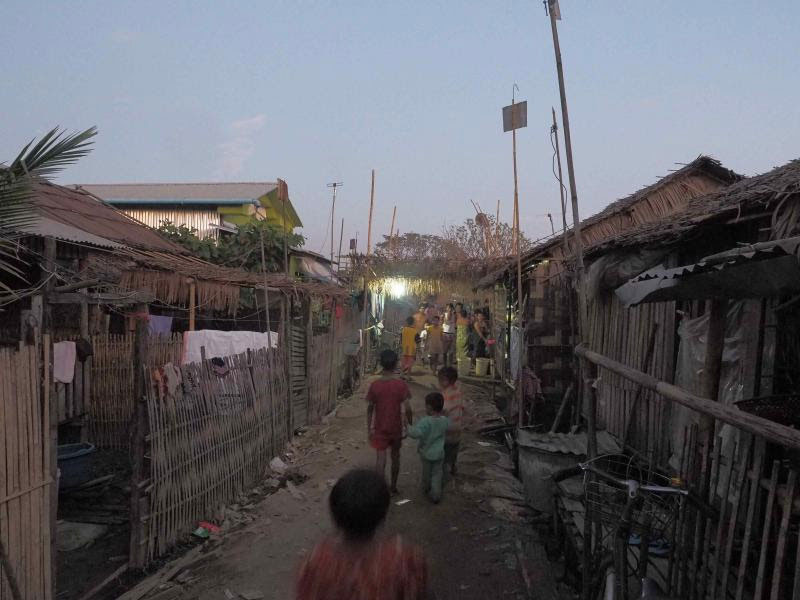The evidence comprised little more than a data table, printed on a single sheet of paper. To Jane Taupin, it didn’t seem to make sense.
“[It] had no guidance for the reader of how to interpret the table,” she said.
“What’s more, it contained handwritten notes and amendments. That is non-compliant with any international standard that I know of.”
Ms Taupin, one of the world’s foremost experts on DNA profiling, had been expecting to raise this and several other serious concerns about the handling of DNA evidence during the Koh Tao murder trial last year.
But despite flying out from Australia to Thailand to attend the hearing, she was never called to the witness stand.
Instead, the defence team relied on the testimony of Pornthip Rojanasunand, head of the Central Institute of Forensic Science, to challenge the DNA findings.
The three judges at the Samui Provincial Court found Zaw Lin and Win ZawHtun guilty of the murder of British tourists David Miller and Hannah Witheridge, sentencing the pair to death. The ruling, delivered on Christmas Eve, relied heavily on the DNA evidence put forward by prosecutors, which claimed a “100%” match and which the court agreed used methodology that was “internationally accepted”.
Yet Ms Taupin, who has worked as an internal laboratory auditor and written books on the use of forensic evidence in courtrooms, said serious doubts linger over whether that is the case.
Crime scenes, she said, are notoriously difficult to gather quality DNA samples from. Cases like the one on Koh Tao, which deal with mixed samples, are fraught with danger: complex and sometimes unreliable statistical calculations must be carried out to determine the probability that someone other than the accused could match the recovered sample.
Yet no statistical analysis was made available to the defence team or the court.
Instead, the judges were simply told by prosecution witnesses the evidence “confirmed” that DNA recovered from the crime scene belonged to the two accused, a claim Ms Taupin said is not strictly possible to make; instead, a probability ratio must be given.
“Whatever way you want to determine the statistics, they’ve got to be validated in your laboratory, and you’ve got to have them. But Thailand doesn’t have them. Not at all,” she said.
“DNA profiling is predicated on statistics, that’s the whole point. You don’t just say it’s a match — it’s not fingerprinting … You need to give significance to that match.”
A HISTORY OF DOUBT
From the moment the bodies of Miller and Witheridge were discovered on Sairee Beach on Sept 15, 2014, police found themselves under enormous pressure — both from the public and the newly self-appointed military government — to resolve the case quickly.
But the investigation was dogged from the outset by a series of very public blunders, including concerns the crime scene had not been properly secured and could have been contaminated.
It soon emerged CCTV cameras in the vicinity of the crime scene were not working, while cameras near the pier — the small island’s sole entry/exit point — were never inspected.
Thai nationals were ruled out almost immediately as suspects, and police quickly declared the island’s Myanmar migrant population was most likely responsible. They announced that DNA samples showed the perpetrators were Asian, even though DNA profiling is not able to determine race — a fact later acknowledged by police forensic experts in court.
On Sept 16, the day after the murders, 11 pieces of evidence recovered from the crime scene, along with DNA samples taken from 14 suspects, were sent to a police forensics lab for testing.
One of those pieces of evidence was the murder weapon, a garden hoe. An initial test found traces of human blood, which proved to be that of Witheridge. But no DNA was recovered.
Almost a year after that test was conducted, the hoe was retested — this time by a team led by Dr Pornthip. It found traces of DNA belonging to at least two people, but which did not match with the profiles of the accused.
A key part of the prosecution’s case was what they said was a “match” between DNA samples found on Witheridge’s body and the two defendants.
Defence lawyers had asked police to hand over the DNA samples that the police used to make this match, for independent verification, but were told there was nothing left of the evidence for retesting.
THE EVIDENCE SOMETIMES LIES
Ms Taupin blames television shows like CSI for propagating the myth DNA evidence is infallible. In reality, she said, DNA profiling relies heavily on assumptions and interpretations by individual scientists. She said studies have shown that it is possible for different labs to offer completely different findings from the same sample.
“It’s completely reliant on the subjective interpretation of the DNA analyst as to how many contributors there are. It all falls back on that,” she said. “If one analyst says there’s only one contributor, another analyst might say there are two.”
As a result, forensic scientists must be acutely aware of the potential flaws in their experiments, and also explain these potential shortcomings to the court, she said.
Ms Taupin said the whole purpose of analysing DNA profiles is not about certainty to begin with — it’s about statistical probability, something which no other branch of forensic science is able to offer.
When a crime scene sample arrives at the lab for testing, forensic scientists are forced to make informed guesses about how many people might have contributed to the mixture of DNA recovered from a piece of evidence. The more possible contributors, the harder it becomes to reasonably link the evidence to any individual person.
The scientists will not analyse entire genomes; instead they look at just a small part. How many areas are tested will differ by country, but in Thailand scientists will check for commonalities at 16 specific locations, which is considered acceptable by international standards.
At each of these 16 locations, there are many different possible genetic variations, known as alleles. Every person has two alleles at each location — one inherited from the mother and one from the father.
A simple analogy is to picture each allele as a box containing Scrabble pieces. If a forensic scientists opens 16 boxes and finds just two letters in each of them, then they can generally assume — as long as the sample is “true” — that there was only one contributor.
While two people can share alleles at individual locations, the odds of them sharing the same values at all 16 points are impossibly small. If testing found matches at 17 locations, the probability that it would be another person is one in 10 billion, according to Ms Taupin.
“Nevertheless, you can’t prove identity, you can only give a statistic. And there’s a lot of steps to get to that point,” she said. “And if you’ve got a mixture of more than one person, the statistics are commensurately different, because there’s different combinations that can give that.”
In the Koh Tao case, the most compelling DNA evidence was that recovered from semen sampled from Witheridge’s body, which contained at least three people’s DNA — the victim and what police said were the two accused. Yet Ms Taupin said it’s not clear how mixed sample statistics were applied to those samples.
If we return to the Scrabble analogy, and imagine that some or all of those 16 allele boxes contain more than two letters, then the number of potential matches vastly increases.
At a basic level, that is what happens with DNA profiling, and is why in mixed samples it is easy to create false links between an accused and a crime scene.
During the Koh Tao trial, the court was told samples were found which match the profiles of the suspects in all 16 locations. But no statistic was offered to show how many other people in the population might also have matched, which Ms Taupin said defied international guidelines.
“If, for example, there were five contributors to a sample, probably most people including you and me could have contributed,” Ms Taupin said. “If you have five contributors, there are so many combinations of permutations that unless the particular crime scene sample had a really uncommon allele, most people in the population could have contributed.
“You have to consider, what are the other people in the population that could have provided, or who could match, that so-called DNA profile that you’ve obtained from the reference sample?”
Despite the prosecution claiming that the DNA evidence showed a match in the Koh Tao case, Ms Taupin said the power of DNA lies not in matching samples, but in its power of discrimination, or what the differences are. “And that is what was not explained in this particular case,” she said.
Ms Taupin said she is not critical of the court’s decision, but the DNA evidence presented by the prosecution had many potential flaws that needed more proper explanation.
Given the nature of mixed sample DNA analysis, she is particularly critical of claims by multiple police forensics experts that their lab results guaranteed the identity of the perpetrators “100%”.
She said there is no international standard that recommends the conclusion of identity from a forensic DNA profile, no matter how many areas on the DNA molecule are examined.
It is for this reason, she said, that DNA profiling alone is not enough to form the basis of a criminal conviction. “It’s just one piece of the circumstantial case. It’s a scientific test, that’s all,” she said.
‘TRUE’ DECEPTION
Ms Taupin said there are many areas during the DNA profiling process where mistakes can be made, which is why the availability of data for peer review is essential.
“There are many ways that you can misinterpret a particular value as being an actual ‘true’ allelial result, and it’s not actually so,” she said.
Ms Taupin pointed to potential mistakes in the limited data presented to the court in the Koh Tao case. In the one-page table, an extra “allele value” — basically an extra Scrabble letter — was found in the DNA sample taken from Witheridge’s breast which did not match either of the accused.
“They [the prosecution] said, ‘Oh well, that doesn’t matter because the other components matched the accused,’ ” Ms Taupin said.
“But it does matter, because if there’s an extra value in there, and if the two accused contributed, then a third person must have donated.”
She said there were also a number of components in the retrieved semen samples, particularly in the anal swab recovered from Witheridge, that were a mixture of at least two people and possibly three.
But the steps to achieve all this were not provided.
Ms Taupin said she did not know whether the testing was conducted on the basis of only two suspects, or whether there were more. The starting assumption would influence how the DNA is analysed.
“The very first area that they look at out of the 16 is called D3, and one accused [in the Koh Tao case] was a 13,15 [allele value], and the second accused was a 13,15 at that area, and the crime scene stain was a 13,15. So they say, well, they could have contributed at that area,” Ms Taupin said.
“But also say for example you could be a 13,15, but I could be a 13,13, and I could have contributed if there’s two contributors. It all falls down on the basis that people can share alleles, and you can share with me a 13, and someone else can share a 15, so it’s all completely dependent on statistics.”
IMPERFECT MATCH
Ms Taupin also raised concerns about the mass collection of DNA that took place on Koh Tao as police desperately searched for suspects in the days after the crime.
While stressing that without access to the police records it’s impossible to know exactly what methods were used, she said “they obviously just kept testing people until they got components that matched. But that’s not how it works.
“If you test a lot of people, you don’t just test until you find that someone matches, because how many other people might match, how many other people that have left the island might match, or how many people in Thailand might match, or how many people in the United Kingdom might match.
“A fallacy, and that’s what I think happened, is that they’ve tested people until they’ve found people that had components that were in the mixture.”
If that is the case, she said, it would mean police have not looked at the whole concept of mixture statistics.
“How they could have ignored mixture statistics defies belief, and shows an absolute ignorance of the literature of the last 20 years and all international guidelines,” she said.
“One particularly disturbing aspect was that it said there was saliva on the right breast of the deceased, but there was no test for it. It was just assumed to be saliva. I mean where did they get that from?”
‘SHOULD BE DISMISSED’
Concerns over the handling of DNA evidence have not been limited to methodology alone. Doubts have also been raised about the laboratory where the crime scene samples were tested. Police presented no solid evidence to the court to show their laboratory was certified ISO17025, which specifies the general requirements to carry out tests, including sampling.
Some Thai DNA experts have questioned whether the police lab responsible for testing in this case had ISO17025 certification at the time of analysing forensic samples in the Koh Tao case.
Andy Hall, a British human rights defender and adviser to the defence team, said regardless of whether or not there was a certification, the process did not comply with proper standards in the opinion of Ms Taupin and the defence team.
“The DNA evidence, essentially the central part of the case against the accused, was very sloppily gathered, analysed and reported in a way that did not comply with international forensic standards,” said Mr Hall.
“That sloppy nature raised suspicions that meant the DNA match against the accused could not be proven beyond reasonable doubt by the prosecution and should be dismissed.”
But the court disagreed. It concluded that the DNA testing by the Royal Thai Police was credible and trustworthy.
The judges said the DNA evidence can prove beyond reasonable doubt that both of the defendants raped the second victim, “even without considering any other facts or circumstances such as the defendants’ confessions following arrest and at the interrogation stages”.
The court found no issue with the DNA evidence lacking any records of how and where it was handled, saying “they are internal procedures which differ within each organisation and does not contribute to inaccurate and incorrect test results, thus the result from both institutions have not been damaged or compromised”.
But Kingsley Abbott, the international legal adviser for Southeast Asia at the International Commission of Jurists, a Geneva-based human rights organisation, said there are several legal concerns about how the court approached the DNA evidence and allegations of torture which should be subject to careful review on appeal.
“A court must always approach DNA evidence, which is inherently complex and vulnerable to error, with the greatest of care,” he said.
“Before taking it into account, it must be sure there were no mistakes from the moment the DNA evidence was collected to the time it was transported, analysed and interpreted. This is only possible when a complete and detailed picture is presented and explained to the court by appropriate officials and experts.
“Whether this was done in this case consistent with international standards should be reviewed on appeal.”
He said allegations of torture made by the accused must be subject to a separate independent, impartial and effective investigation as alleged crimes in their own right.
“The appeal court should also review whether, in its decision, the trial court placed the burden of proof that torture occurred on the accused, contrary to international law,” said Mr Abbott.
“Once an allegation of torture is made, the burden falls on the prosecution to prove beyond reasonable doubt that the evidence was obtained lawfully. Any evidence found to have been obtained by torture must be excluded from evidence in all proceedings.”
ON THE DEFENCE
In the wake of last month’s court ruling, the defence team has been heavily criticised for not attacking the DNA evidence more vigorously. Notably, questions linger over why Ms Taupin was never called to offer expert testimony.
Defence lawyer Nakhon Chompuchat said the case was complex but his team had taken great care to challenge the available DNA data.
“Police were given a very tough cross-examination regarding the subject of DNA evidence. This was a groundbreaking case, the first time a Thai criminal defence team ever challenged police forensic evidence and were granted a retest,” he said.
“The defence team drew extensively from what they learned from Jane [Taupin] in their questioning of the police DNA evidence. Most of what she pointed out Dr Pornthip did give testimony on.
“Since the defence team are preparing an appeal, certain elements of the case, this being one, cannot be further discussed at this time.”
Police, meanwhile, have been at pains to defend the integrity of their investigation.
They have, in particular, defended the quality of the DNA evidence, insisting it meets all international standards.
“The DNA evidence cannot lie,” said police spokesman Pol Maj Gen PiyaphanPingmuang.
But Ms Taupin is not so convinced.
“It’s quite specific that if you say a particular person has contributed to a DNA sample or crime stain, then you must state the statistical significance. You must. And the ‘must’ is in capital letters and underlined. That is an international guideline,” she said.
“So to say a crime scene stain matches a reference sample without any significance of inclusion, without any statistics, follows no recognised guideline, none at all.”
http://www.bangkokpost.com/news/special-reports/821072/unlocking-the-dna...
